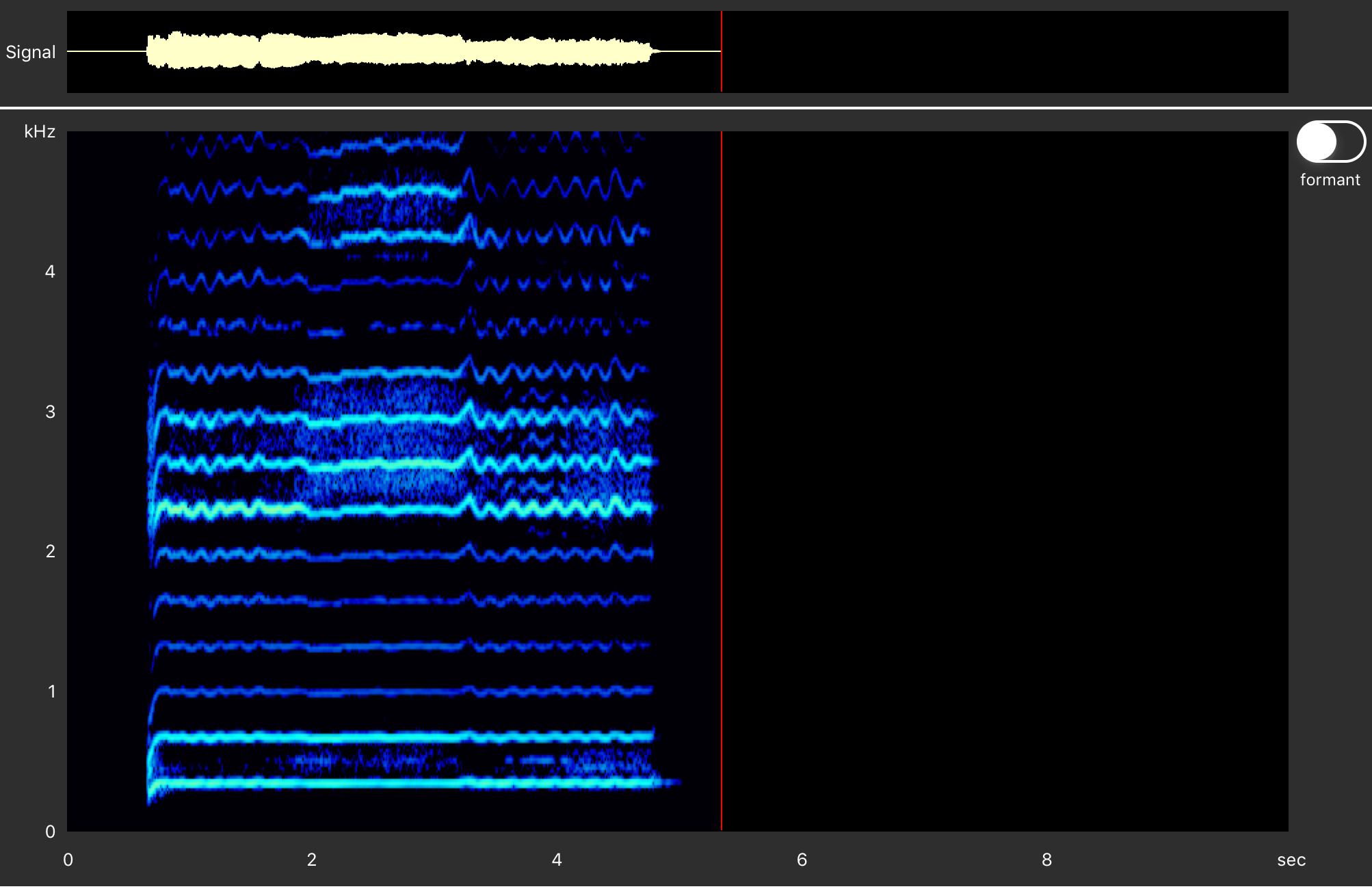Vibration of the true vocal folds creates pitch. The pitch that we hear when we sing a note is called the fundamental frequency. Even though we think we hear only one pitch, a series of overtones or harmonics is also present. The phenomenon can be seen through a a real-time spectral analysis program.

Even though we think we hear only one pitch, a series of overtones or harmonics is also present.
Free True Vocal Fold Vibration Equals To A Clear Harmonic Series
The next video presents a production of a straight, speech-like sound that is started with an open throat feeling. The sound is suddenly shifted into a constricted sound, after which the open throat feeling is re-established. Notice how the overtones are disturbed when the sound is constricted and the true vocal fold vibration unequal. A balanced vibration of the true vocal folds, instead, enables a clear and audible series of overtones.
A clear and free series of overtones provides a significant asset to choir singers, for instance, as in choirs the goal is to blend singers’ voices together evenly.
Being aware of the harmonic series brings many advantages. Also overtone singers know how to amplify different overtones one at a time together with the fundamental frequency, the result of which is that two pitches can be heard at the same time. The next video shows how skillfully overtone singer Anna-Maria Hefele plays with the harmonics.


5 thoughts on “Acoustics: What Is The Overtone Series?”